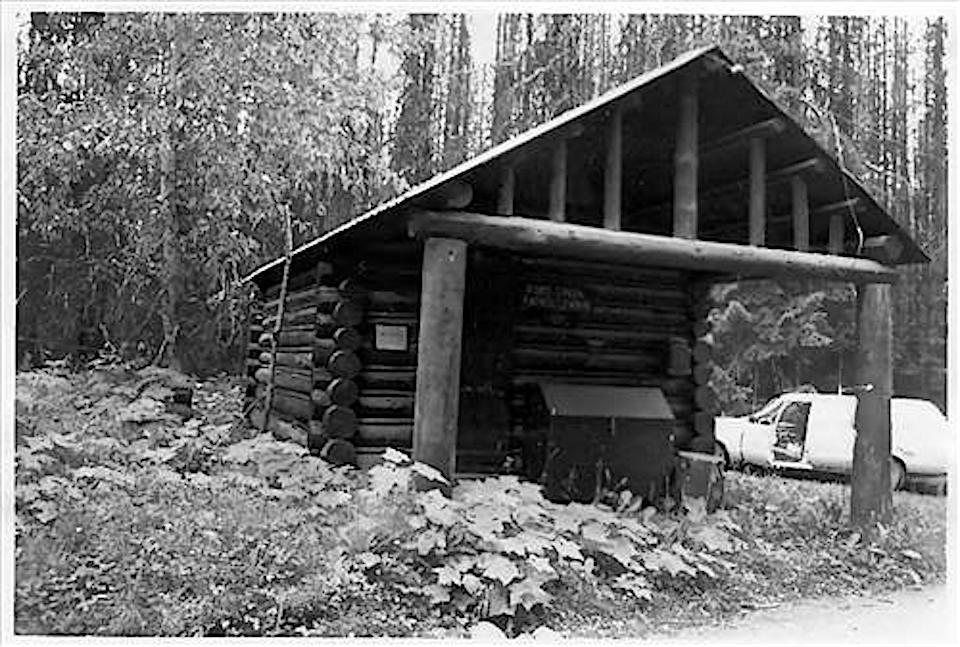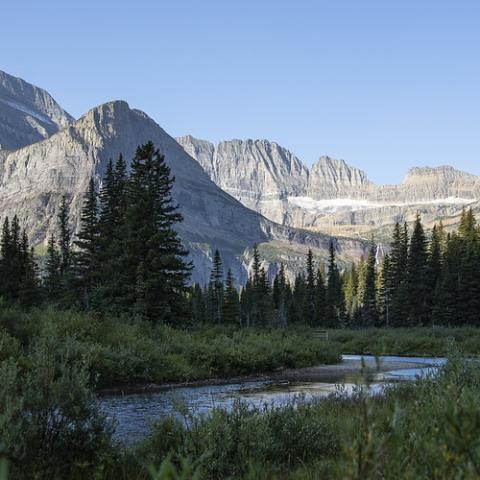
Suspicious fire claims Ford Creek Cabin built in 1928 in Glacier National Park/NPS
A nearly-century old backcountry patrol cabin in Glacier National Park was lost to a fire that is being investigated as suspicious, one of four fires that were reported Thursday morning.
The Ford Creek Cabin was built in 1928, a tiny, one-room log cabin built for $350. Despite its age, it had been used by rangers for winter patrols. It was destroyed by the fire, park officials said Thursday evening.
Park officials received a report of multiple wildland fires early Thursday morning. That led to a multi-agency response from local county, state, and federal agencies consisting of wildland fire crews, hotshot crews, engine crews, and law enforcement.
Several investigators were on the ground Thursday, along with the FBI and NPS-Investigative Services Branch assisting remotely. Portions of the park were closed due to the investigation, including Inside North Fork Road from Polebridge to Logging Creek, and Kintla Road beyond the Bowman Lake turnoff.
If you witnessed any suspicious activity on the night of July 22 or early morning of July 23, you are encouraged to call the Glacier tip line at 406-888-7077 and leave a message.
When the cabin was built, it had corrugated metal on a gable roof, a metal stove pipe, and nine log purlins. The wall logs were saddle notched with sapling chinking and square-cut crowns.
"The roof extends to a full porch with a tie beam and vertical pole beneath the ends of seven purlins. There are shakes in the gable ends," read a June 1984 petition for listing the cabin on the National Registor for Historic Places. "The door is solid wood and 'bear-proofed.' The windows are iron bars woven with barbed wire over six-light, wood frame casements."
When it was built in 1928, the Ford Creek Cabin was one of four identical "snowshoe" cabins the Park Service paid for in the park.
"The Park provided floor shiplap, roofing materials, cement, okem (chinking), cellar planks, windows and doors and their frames, shakes, and hardware," the nomination said. "The contractor cleared the site, cut trees marked by the Park Engineer, built the cabin, and cleared the site."
"... This cabin is one of many similar structures built in Glacier National Park during the 1920s and 1930s to facilitate the supervision of lands within the park boundaries. The park's rugged topography and the often rapidly changing weather conditions made it imperative that these cabins be built at strategic points to protect rangers charged with park surveillance," the nomination explained. "The cabins were usually located 8 to 12 miles from a permanent ranger station. Thus, a park ranger could spend a number of days on patrol duty without returning to the station for supplies or shelter. The Ford Creek patrol cabin is significant because it illustrates an important aspect in the development and administration of Glacier National Park."




 Support Essential Coverage of Essential Places
Support Essential Coverage of Essential Places







Comments
Technically, it's not actually in Glacier National Park. It's across the river. So incredibly sad.